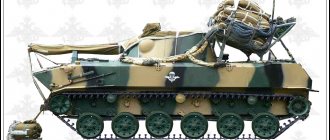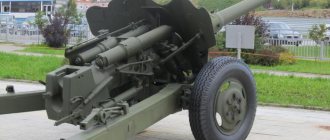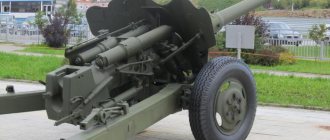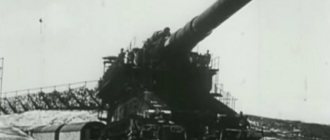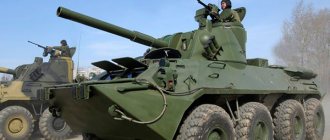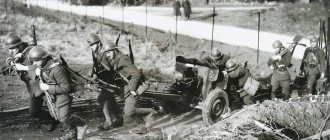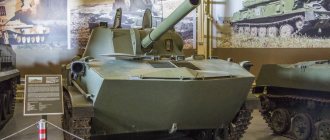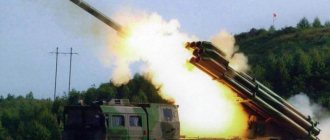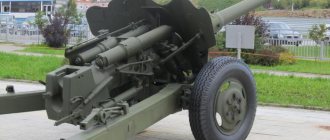This term has other meanings, see Nona.
| 2B16 "Nona-K" | |
| 2B16 "Nona-K" in the Motovilikha Plants Museum | |
| Type | Towed artillery piece |
| A country | |
| Service history | |
| Years of use | since 1986 |
| In service | |
| Production history | |
| Constructor | Motovilikha plants |
| Designed by | 1986 |
| Manufacturer | Motovilikha plants |
| Years of production | from 1986 to 1989 |
| Total issued | 188 |
| Characteristics | |
| Weight, kg | 1200 |
| Length, mm | 4570 |
| Barrel length, mm | 2900 (24.2 klb) |
| Width, mm | 1790 |
| Height, mm | 1350 |
| Crew (crew), people. | 5 |
| Caliber, mm | 120 |
| Gate | semi-automatic with wedge gate and plastic seal |
| Recoil device | hydraulic recoil brake and hydropneumatic knurler |
| Carriage | with sliding frames |
| Elevation angle | -10..+80 |
| Angle of rotation | -30..+30 |
| Rate of fire, rounds/min | 8..10 |
| Initial projectile speed, m/s | 109..307 |
| Sighting range, m | 7100 (OFM) 8800 (OFS) |
| Maximum range, m | 12800 (ARS) |
| Aim | 1P9 |
| Media files on Wikimedia Commons | |
2B16 "Nona-K"
- Soviet towed artillery piece.
Developed in a special design bureau (SKB) of the Lenin Plant in the city of Perm.
Description of design
2B16 during a training exercise of the 138th Guards. omsbr
February 4, 2022.
The 2B16 gun is a towed version of the 2A51 gun, mounted on the 2S9 Nona-S self-propelled artillery gun, and retains all the qualities and features of the base gun. Intended for artillery battalions of air assault brigades[2].
gun
Thanks to the use of the “Gun-Shot” ballistic design, the 2B16 combines the capabilities of a cannon, howitzer and mortar. The barrel has a length of 24.2 calibers, the barrel has a muzzle brake, the effectiveness of which is about 30%. Anti-recoil devices are located above the barrel, consisting of a hydraulic recoil brake and a hydropneumatic knurler. The barrel is attached to the breech, which houses a wedge gate[2].
Upper machine
The upper machine houses the gun and horizontal and vertical guidance mechanisms. To protect the crew from bullets and shrapnel, a shield is installed on the upper machine [2].
Recoil devices
The anti-recoil device is a unit that combines a hydraulic recoil brake with valve control and variable recoil length, an overrun brake with throttle control, and a pneumatic knurler.
Lower machine and carriage
The lower machine is located in a two-frame carriage. An upper machine with a tool is installed on the lower machine. The gun is transferred to the firing position by automatically extending the frames. The frames are brought into the stowed position using a winch[2].
Ammunition used
Like the 2A51 gun, the 2B16 gun is capable of firing a wide range of ammunition - all types of 120 mm mines, as well as high-explosive fragmentation and cumulative shells with ready-rifled rifling. In terms of their combat power, 120 mm shells are close to 152 mm shells[2].
| Table of performance characteristics of shots used by the 2B16 gun[3][4][5] | |||||||||
| Index | Ammunition type | Projectile weight, kg | Range, km | Area of destruction of manpower, m² | Equipment damage area, m² | Armor penetration, mm | |||
| 3VO32 | cassette with KOBE | 23,3 | 0,2..8,0 | 2800 | — | 100 | |||
| 3VOF54 | OFS | 19,8 | 0,1..8,8 | 2200 | 2100 | — | |||
| 3VOF54-1 | OFS | 19,8 | 0,1..8,8 | 4400..6600 | 2100 | — | |||
| 3VOF55 | ARS | 19,8 | 0,7..12,8 | 1800 | 1700 | — | |||
| 3VOF55-1 | ARS | 19,8 | 0,7..12,8 | 3600..5400 | 3400..5100 | — | |||
| 3VBK14 | cumulative | 13,1 | 0,04..1,0 | — | — | 600 | |||
| 3VOF112 | OFS | 25 | 9..12 | ||||||
| KM-8 "Gran" | OFM | 27 | 1,5..9 | ||||||
| 3VOF79 | OFM | 16 | 7,1 | 1500 | 200 | — | |||
| 53-VOF-843B | OFM | 16 | 0,45..5,7 | 1500 | 200 | — | |||
| 3VOF68 | OFM | 16,1 | 7,247 | 2250 | 1200 | — | |||
| 3VOF53 | OFM | 16,1 | 0,45..5,7 | 2250 | 1200 | — | |||
| 3VOF69 | OFM | 16,1 | 7,0 | 1700 | 700 | — | |||
| 3VOF57 | OFM | 16,1 | 0,45..5,6 | 1700 | 700 | — | |||
| 3B34 | incendiary mine | 16,3 | 0,45..5,7 | — | — | — | |||
| 3BC24 | Illumination mine | 16,3 | 1,0..5,4 | — | — | — | |||
| 53-VD-543 | Smoke mine | 16,6 | 1,0..5,4 | — | — | — | |||
| 3VD17 | Smoke-smoking mine | 16,1 | 6,8 | — | — | — | |||
| 3VD16 | Smoke-smoking mine | 16,1 | 1,0..5,4 | — | — | — | |||
120-MM GUN FOR THE FUTURE TANK MCS
Introduction
Over the past 10 years, American military experts have been developing a new light tank, MCS (Mounted Combat System). The MCS tank was created as part of the Future Combat System (FCS) program. This program until July 2009 was the main development program of the US ground forces. The program was developed within the framework of the “New Type Army” concept, which involved a comprehensive reform of the US ground forces. The concept is set out in the document Army Vision 2010, published in 1996, and is aimed at increasing the combat effectiveness of both individual formations and the ground forces as a whole. For more than 10 years, FCS was the largest, most complex and expensive new military development program in the history of the US Army, on which, according to some estimates, about $300 billion was spent.
All ground combat vehicles developed under the FCS program had to be capable of being transported by the C-130 Hercules aircraft, with a maximum payload of 20 tons. A special feature of this aircraft is the ability to take off and land at almost any airfield, including unpaved airfields, which is especially important due to the lack in continental Russia and other countries of a sufficient number of airfields equipped with long runways to accommodate heavy transport aircraft. Hence, the main requirement when creating a light tank was to ensure that the mass of the tank did not exceed 20 tons.
Such a strict weight limitation required the developers to adopt a number of new technical solutions that had not previously been used in the creation of tank guns. The main problem associated with installing a powerful tank gun on a light carrier is ensuring the stability of the carrier. Reducing the forces transmitted to the carrier can be achieved by reducing the force of resistance to recoil by increasing the recoil length of the barrel and by using a muzzle brake.
However, installing a muzzle brake on a tank gun equipped with a tank weapon stabilizer will disrupt the natural balancing of the swinging part of the gun and will require, in order to maintain it, either a significant increase in the mass of the breech - 4-5 times more than the mass of the muzzle brake, or the use of a balancing mechanism, which will worsen operation of the stabilizer of tank weapons. Therefore, almost all modern tanks equipped with a tank weapon stabilizer do not have a muzzle brake. The problem of installing a muzzle brake on a tank gun can also be solved by reducing the mass of the barrel above the axis of the trunnions, as well as the mass of the muzzle brake so that when installing it, the natural balancing is not disturbed. This problem was solved by the developers of the gun for the MCS tank through the use of composite materials, higher-strength steels and optimization and lightweighting of the muzzle brake design.
Other requirements for the tank were: reducing the crew from four to three by installing an automatic loader, as well as the ability to hit targets beyond the line of sight at a range of up to 12 km. To this end, in parallel with the development of the MCS tank, work was underway to create promising homing tank projectiles: the kinetic MRM-KE, containing a long rod inside, and the cumulative MRM-CE with a tandem warhead. The range of hitting targets with both shells is 12 km. The MRM-KE projectile has a combined guidance system, including a millimeter radar and a semi-active laser homing head (GOS), and, due to the rocket engine, must be accelerated to the speeds of sub-caliber anti-tank projectiles. The MRM-CE projectile is equipped with a dual-mode combined seeker, consisting of an infrared uncooled 7.62 cm IR camera and a digital semi-active laser seeker. Detection of over-the-horizon targets and their target designation using a laser is supposed to be carried out from unmanned aerial vehicles of class 1 “T-Hawk” and class 4 “Fire Scout”, also developed under the FCS program.
120 mm XM360 tank gun
After studying several options for existing and developing 105 mm, 120 mm and 140 mm guns as the main armament for the new MCS tank, the developers decided to abandon all these options and move on to developing a fundamentally new 120 mm gun. The reason for this decision was that the existing 120 mm gun is too heavy and has a large recoil impulse to be installed on a vehicle weighing about 20 tons, and the 105 mm gun cannot penetrate the armor of some existing and future tanks.
Development of the new weapon began in October 2002 as part of a joint project between the US Army Armament Research, Development and Engineering Center (ARDEC) and General Dynamics Corporation. After a large-scale comprehensive study of gun technologies, the ARDEC center selected the most thoughtful and effective project for the development of the XM360 main artillery system.
The development of the new gun used knowledge gained from the program to create the 105 mm M35 gun and the XM291 gun with an interchangeable 120/140 mm barrel, neither of which was put into mass production. In November 2003, the first Advanced Technology Demonstrator (ATD) was tested, which included a new gun fire control system and loading system. In November 2004, a light 120-mm smoothbore gun was tested, which received the designation XM360.
The gun has a modular loading mechanism, a new wedge breech, built-in sensors that will allow the crew to monitor the condition of the gun and recoil devices without contact with it, as well as a number of other innovations. To reduce the weight of the gun, in addition to high-strength steel, composite materials and titanium were used. Thanks to the modular design, the crew can easily replace damaged parts of the gun, which facilitates maintenance and repair in the field. The modular design will also make it possible, by simply replacing some parts, to upgrade to a larger caliber in the future.
Structurally, the gun consists of a barrel with a muzzle brake, a breech and a cradle with recoil devices. The barrel is placed in a protective casing of trapezoidal cross-section. The breech contains a wedge gate with a wedge descending in a vertical plane. A feature of the wedge gate is that the wedge has three protrusions, and the breech, accordingly, has three grooves along which the wedge slides during opening.
Unlike conventional breech-loaders, in which the entire wedge slides along one groove, the presence of three grooves and ridges allows the loads from the shot to be more evenly distributed across the breech and, therefore, makes it lighter.
The wedge is opened using a mechanism with a 600 V DC electric drive located under the breech.
Since the gun, in addition to conventional projectiles, is designed to fire guided homing projectiles, the wedge is equipped with a contact group that allows the necessary commands for the operation of electronic equipment to be transmitted to the MRM projectiles before firing.
The cradle is a compact lightweight design. In the central part of the cradle, two grooves are made in the horizontal plane, along which rail guides slide, connected by a clamp to the barrel. The clamp and rails, to make the structure lighter, are made of titanium. One end of the rails together with the clamp is attached to the barrel using a clip, and the other end is attached to the breech. This design allows you to switch to a larger (for example, 140 mm) caliber barrel without any special changes. During the process of rolling back, the barrel with the breech and rails slide in the grooves of the cradle.
Features of the XM360 artillery system are small-sized recoil devices with built-in measuring equipment (pressure sensors, etc.) for monitoring the parameters of the gun in the operating automatic gun turret of the MCS tank.
On the outside of the cradle, anti-recoil devices are mounted diametrically opposite - two recoil brakes and two twin gas knurls with additional cylinders. This symmetrical arrangement of the recoil devices makes it possible to compensate for moments from forces arising in the recoil devices. In the future, to further simplify the design, the recoil brakes are planned to be made of titanium.
The force transmitted to the carrier, measured in the trunnions, is ~27 t, the recoil length is ~60 cm. For comparison, the recoil length of the domestic 125 mm tank gun 2A46M is ~32 cm. The domestic 125 mm anti-tank gun 2A75 mounted on a “light tank” 2S25 “Sprut-SD” weighs 18 tons, the recoil length is ~70 cm and, nevertheless, a significant skidding of the vehicle is observed when firing.
The design of the gun will also include an original thermal insulating casing made of composite materials using stealth technologies. In particular, stealth technologies are externally manifested in the unusual shape of the casing, which has a trapezoidal cross-section. This shape – the absence of right angles – reduces radar signature. In addition, the presence of a casing, in addition to its traditional purpose - protection from external influences, will allow, after the barrel has warmed up during firing, not to increase the visibility of the tank in the thermal range.
Pre-stressed thermoplastic-wound barrel
The main feature of the tank gun is its lightweight barrel, made using composite materials. The use of composite materials not only directly reduces the weight of the barrel, but also allows the use of lower power and weight drives, improved barrel balancing and the use of a muzzle brake (which is not found on any modern tank gun equipped with a tank weapon stabilizer), and thus ensures further reduction in the mass of the entire system. In addition, the use of high-stiffness composites promotes pointing accuracy and reduces dynamic stresses associated with high projectile velocities.
In the barrels of modern tank guns, autofrettage is used to create residual stresses in the barrel wall, facilitating its unloading when fired. Since some of the steel from the outer surface of the XM360 gun barrel was replaced with a composite material, it was imperative that the composite provide the same residual stress distribution as the steel original. To achieve this, the developers, using numerical methods, solved the problem of modeling the distribution of residual stresses in the barrel wall, including autofrettage and composite winding. The loads in static mode were calculated and a dynamic analysis of stresses in the barrel walls was carried out. Dynamic analysis was carried out taking into account changes in pressure as the projectile moves along the barrel. As a result of mathematical modeling, the number of layers and a combined method of laying the composite tape were selected: both along the axis of the pipe and across it, in two sections.
Traditionally, there are two problems associated with the manufacture of composite shells. The first problem is the mismatch between the coefficient of thermal expansion of the composite shell and the steel base (substrate), which leads to the formation of a gap that reduces the load-bearing capacity of the composite. The second problem is the difficulty of creating the necessary prestresses in the composite shell, similar to the stresses that arise when fastening the barrel with a metal casing. Until a certain point, solving these issues required a significant complication of the production process, which is unacceptable in mass production.
In the United States, the first attempts to use composite materials for the production of artillery barrels were made by the Benét laboratory in the late 1980s and early 1990s. These efforts resulted in the production and testing of several 105 mm and 120 mm barrels. During the work, the developers tried to prevent the formation of a gap of about 0.1 mm between the composite winding and the steel shell during the curing process of the composite.
The problem was later successfully solved by introducing a new process for tension winding IM7 carbon fiber tape embedded in a thermoplastic resin (polyetheretherketone polymer matrix) and quickly curing the resin during winding. Rapid curing of the resin was achieved by pre-cooling the barrel to sub-zero temperature, which was maintained throughout the entire process.
Cooling the barrel during winding made it possible to: speed up the curing of the polymer to maintain the necessary stresses, prevent thermal expansion of the barrel and subsequently form a gap between the steel part and the composite, speed up and simplify the process of winding the composite tape.
The process of laying the tape, both across the axis of the trunk and along it, is approximately the same and is carried out using robotic machines. The gas burner evaporates the moisture that forms on the barrel in the form of frost, heats and melts the polymer contained in the tape, which is immediately pressed by the roller to the previous layer. The tape is laid under tension, as a result of which residual stresses remain during cooling. The tension forces of the tape are selected in such a way that the stress distribution in the metal base corresponds to the stress distribution as in the original all-metal barrel.
If carbon fiber is in direct contact with steel, galvanic corrosion occurs. To prevent galvanic corrosion, two layers of fiberglass in a polymer polyetheretherketone matrix were applied between the steel part of the barrel and the composite coating. To protect the inner layers of carbon fiber from physical and chemical damage, 2 more layers of the same fiber were added to the outside of the composite coating at a 45 degree angle.
As a result of reducing the steel part of the barrel under the composite coating by 113 kg and applying 20 kg of carbon fiber composite, it was possible to reduce the total weight of the barrel by 93 kg. In addition, through the use of new high-strength steel with a 20% increased yield strength, double autofrettage and a number of other measures, it was possible to increase the weight of the barrel to 720 kg, reducing it by 345 kg compared to the barrel of the M256 gun of the Abrams tank, despite the installation of an additional device - muzzle brake. And that's just the trunk. The breech and recoil devices were also made as light as possible through the use of higher-strength steels, titanium and rational design. The installation of a barrel muzzle brake (made integral with the barrel), by reducing the load on the recoil devices, made it possible to reduce the weight of the gun by another 91 kg. The use of a new composite casing weighing 35 kg for the XM360 gun allowed saving another 47 kg compared to the casing of the Abrams tank.
Thus, as a result of the above and a number of other measures, in general it was possible to reduce the mass of the entire XM360 cannon by 1158 kg compared to the M256 cannon of the Abrams tank, which has a mass of 3023 kg, and bring it to 1865 kg. That is, the XM360 cannon has become more than 35% lighter than the M256 cannon, while retaining “all the capabilities of the Abrams tank gun.”
Muzzle brake
As noted above, any mass placed at the muzzle of the barrel to maintain natural balance will require an additional increase in the mass of the breech. Moreover, due to the inequality of the shoulders, this mass can be several times greater than that installed in the muzzle. Despite the significant reduction in the weight of the barrel above the trunnion axis due to the use of composite and stronger steels (more than 93 kg), the weight of the muzzle brake due to the larger shoulder should be significantly less than this figure. That is, significant weight restrictions are also imposed on the muzzle brake, which not every design can comply with. In addition, the muzzle brake, in order to prevent premature expansion of the sabot sectors of sub-caliber projectiles and the opening of the tail of feathered ones, should not have internal cavities and chambers in the brake cavity. In this case, one of the most acceptable options may be the design of a barrel muzzle brake, made integral with the barrel. This design of the muzzle brake has been known for a long time and was used on the Russian 100-mm towed anti-tank gun T-12.
In the process of creating the XM360 gun, several options for the muzzle brake were considered, both with and without a casing. The original version contained 10 rows of side holes, 12 holes in each row, evenly distributed around the circumference. To reduce the level of impact of the shock wave from a shot on the carrier, it was planned to additionally provide the muzzle brake with a casing. One of the variants of the casing was made in the form of a cylinder, put on the main muzzle brake with a gap, and had ten rows of slot-shaped side windows. As a result of this, the powder gases flowing from the muzzle brake expanded inside the casing and flowed out to the side, reducing the pressure on the carrier. This design of a muzzle device, called a “relaxator,” was first proposed by Russian developers more than 20 years ago and is protected by an author’s certificate. Other variants tested were muzzle brakes with a rectangular casing with one or two vertical internal baffles.
However, the presence of the casing, despite a significant reduction in the effect of the shock wave on the carrier, leads to an imbalance in the weapon, which, apparently, the developers were unable to eliminate. Therefore, in the following versions of the gun there is no casing. In 2006, a barrel with a barrel muzzle brake without a casing was tested, containing 14 rows of side holes. In the latest version of the XM360 gun, the number of rows of holes in the barrel muzzle brake has been reduced to 12. According to test results, the effectiveness of the muzzle brake (reducing the impulse transmitted to the carrier trunnions) was more than 25%. This made it possible, in combination with other measures, to significantly reduce the recoil impulse of the XM360 tank gun.
Tests
XM360 gun in a climate chamber
During the creation and testing of the design, the gun was subjected to extensive testing. In June 2008, test firing tests for the reliability and safety of the tank gun were completed at the Aberdeen Proving Ground. The following month, a series of 500-round tests began on the survivability of the gun. During survivability tests, the barrel withstood more than 866 rounds. In total, from 2004 to 2009, under the XM360 cannon development program, 1952 shots were fired from different barrels.
Tests were carried out on the functioning of the gun in extreme climatic conditions. The tests were carried out in a climate chamber at low sub-zero, high positive temperatures and under conditions of sudden temperature changes. Tests confirmed the functionality of the weapon in extreme conditions.
Tests were carried out to determine the effect of the composite on the frequency characteristics of the gun. When replacing part of the metal with a composite, it was necessary to ensure that the natural frequency of the barrel was not lower than that of its steel counterparts. Otherwise, a decrease in the natural frequency of the barrel may lead to its coincidence with the frequency of loads arising during the movement of the machine. If the frequencies coincide, the excitation of barrel vibrations will have an extremely negative impact on the stabilization of the gun, which will lead to a decrease in firing accuracy.
Studies on a stand for recording the frequency characteristics of a barrel have shown that the frequency characteristics of a barrel with composite winding, both before firing and after a series of firings, are higher or the same as those of an all-metal barrel in all three main modes, that is, the specified requirements were completed (see table).
The barrel was also tested for local winding damage caused by a bullet or shrapnel. After a 7.62 mm bullet entered the winding, the barrel withstood 200 cyclic loads with hydraulic pressure corresponding to the pressure of the firing process. No fatigue damage was found.
| Frequency characteristics of the M360 gun barrel before and after winding the composite material | |||
| Trunk | Mode, Hz | ||
| First | Second | Third | |
| Before winding | 26.50 | 81.00 | 174.00 |
| After winding | 28.75 | 85.25 | 178.75 |
Domestic 125 mm tank gun 2A75
Self-propelled anti-tank gun 2C25 Sprut-SD
, the domestic “light tank” – the self-propelled anti-tank gun (SPTP) 2C25 “Sprut-SD” was considered as an analogue to the American light tank MCS . The “Sprut-SD” can be transported by military transport aircraft and landing ships, and can be dropped by parachute with the crew inside the vehicle from the Il-76 military transport aircraft and without preparation to overcome water obstacles.
The Sprut-SD was put into service in 2006. There are currently 24 vehicles in service in the Russian army. In accordance with the state procurement program, until 2015 it is planned to purchase 57 SPTP 2S25 Sprut-SD for the armed forces.
The main armament of the vehicle is the 125-mm smoothbore anti-tank gun 2A75, developed by Artillery Plant No. 9 (now JSC Plant No. 9, Yekaterinburg). The 2A75 gun was put into service in 2005.
The 2A75 gun was created on the basis of the 125 mm 2A46 tank gun, which in turn was created on the basis of the 125 mm 2A26 (D-81T) gun, developed back in 1962. In November 1974, the T-64A tank was equipped with a modernized 2A46-1 (D-81TM) tank gun and a 2E28M2 weapon stabilizer. Somewhat later, a version of the 2A46-2 gun was installed on the T-64B tank.
Since the release of the first versions of the 2A46-1 and 2A46-2 guns in 1974, the 2A46 gun has been modernized several times. The first modernized versions 2A46M for the T-72, T-90 tanks and 2A46M-1 for the T-80U tank were created in 1980. Until recently, the domestic 125-mm tank gun 2A46M, despite some of its shortcomings, was considered one of the best (if not the best) tank guns in the world. Its main advantages over foreign analogues are a larger caliber, a long barrel, which allows for high initial projectile velocities, the presence of diametrically spaced recoil brakes, and others. Now the 4th and 5th versions of the gun modernization are coming into service - 2A46M-4 and 2A46M-5, adopted for service in 2005 and installed on the T-80 and T-90 tanks, respectively. The 2A46M-5 (2A46M-4) gun barrels are interchangeable with the 2A46M (2A46M-1) gun barrels.
The upgraded 2A46M-5 and 2A46M-4 guns have the following design differences from the serial 2A46M and 2A46M-1. Tolerances on barrel geometry have been tightened. The barrel has a differentiated tolerance for wall thickness (in the muzzle the wall thickness difference is no more than 0.6 mm). The rigidity of the cantilever part of the barrel and the dynamic balance of the gun have been increased. Improved fixation of the barrel on the cradle guides and gun trunnions in the tank turret. Barrel guides in the prismatic cradle are used. The rear guide from the cradle box has been moved to a more rigid frame part and is made in the form of bronze surfacing. Additional backlash selecting devices were introduced in the neck of the cradle (2 pcs.), and instead of stops, rollers were used in them, which eliminates the influence of wear of the stops on pressing the barrel to the cradle guides and the friction force in this connection is reduced by replacing sliding friction with rolling friction. The influence of backlash in the trunnions on shooting accuracy has been reduced due to the use of backlash-free trunnion units with elastic rollers and a reverse wedge.
To increase the firing accuracy of artillery weapons by automatically taking into account the bending of the barrel when firing, a reflector of the barrel bending device (BMD) is mounted on the muzzle of the pipe, and on the 2A46M-4 gun a cradle has been modified for installing the BCD transceiver. The device is an optical-electronic system consisting of a special receiving-emitting unit installed at the base of the artillery barrel and a reflective mirror located at the muzzle of the barrel. The digital signal processing used in the device ensures the measurement of the necessary parameters of the barrel in a wide range of interference and operational influences. The measured parameters are provided as corrections to the ballistic computer, which improves shooting accuracy. The use of the device allows you to increase the accuracy of hits during rapid-fire shooting at a target several times.
As a result of all these measures, the firing accuracy of the 2A46M-5 cannon compared to the 2A46M cannon was increased by 15-20%, and the total dispersion during firing immediately decreased by 1.7 times.
When installing the 2A46M gun on a lighter chassis for the Sprut-SD, it had to be significantly modified. New recoil devices were developed with the recoil length increased to 700 mm, and some other design changes were made, as a result of which the gun received a new index 2A75.
The gun is stabilized in the vertical and horizontal planes and fires the same 125-mm separate-case-loading ammunition that is used to fire the 2A46M cannon. The gun's ammunition capacity is 40 rounds, of which 22 are in the automatic loader. In addition, the ammunition includes a laser-guided projectile that can hit targets at a range of up to 4000 m. The maximum rate of fire is 7 rounds/min. The weight of the gun is 2350 kg, the barrel length is 6000 mm. The gun, like the 2A46M gun, is equipped with an ejector and a thermal protective casing, but unlike the American XM360 gun, it does not have a muzzle brake.
In the foreground is a 2A75 cannon, behind it is a 2A46M-5 cannon. Barrels without thermal protective casing. Exhibition “Russian Expo Arms”, Nizhny Tagil, 2009.
A significant increase in the length of the gun's recoil plus the recoil of the carrier body when firing (due to the operation of the hydropneumatic suspension) made it possible to reduce the impact of the shot on the carrier, however, despite this, there is a significant skidding of the vehicle, which could be significantly reduced by using a muzzle brake. At one time, prototypes of a muzzle brake weighing less than 25 kg were manufactured and tested for this gun. However, its introduction into production encountered imperfections in the technological base and the need to significantly change the design of the gun itself, as a result of which the use of a muzzle brake had to be abandoned.
The gun is loaded using a horizontal automatic loader mounted behind the vehicle's turret. It is a set of components and mechanisms: a rotating conveyor with 22 ready-to-use shots, a chain mechanism for lifting a cartridge with a shot, a mechanism for removing spent pallets with a catcher, a chain rammer for a shot from a cartridge into a gun, a drive for the cartridge ejection hatch cover and a movable tray, an electromechanical stopper guns on the loading angle, control unit. The automatic loader conveyor, located in the lower part of the fighting compartment, allows crew members to move inside the vehicle from the fighting compartment to the control compartment and back along the sides of the hull. Cassettes with shells and charges placed separately in them are installed in the automatic loader conveyor at an angle equal to the gun loading angle. If the automatic loader fails, the gun can be loaded manually.
To ensure increased recoil, the automatic loader has an extended cassette lift frame. The mechanism for catching and removing spent pallets makes it possible, when a spent pallet passes through it, to temporarily block the back side of the end part of the gun breech. This allows the cleaning system, during the subsequent movement of the spent pallet, to blow air through the gun breech area and crew work areas.
The gun is equipped with a computerized fire control system from the commander's and gunner's workstations, ensuring their functional interchangeability. The fire control system includes a gunner's sighting system (night and day sights with vertical stabilization of the field of view, digital ballistic computer, laser rangefinder); commander's sight combined with the function of a day/night sight with a laser range finder and a stabilized field of view in two planes, as well as a target guidance device for guided missiles of the 9K119M complex; a set of sensors for automatically entering corrections taking into account atmospheric parameters, charge temperature, wear and curvature of the barrel, etc.
A computerized fire control system from the commander’s workplace provides fundamentally new fire control functionality, namely: terrain surveillance, target search and target designation with a stabilized field of view; combining the functions of launching and controlling a missile with targeted firing of artillery shells in the commander’s sight; duplication of the ballistic computing device of the gunner's instrument complex; autonomous activation and control of guidance drives and gun automatic loader; prompt transfer of control of the complex from the gunner to the commander and vice versa.
| Main characteristics of guns 2A46M-5, 2A75, XM360 | |||
| Characteristics | Tank T-90S Model 2006 | SPTP Sprut-SD Model 2005 | Tank MCS |
| Gun index | 2A46M-5 | 2A75 | XM360 |
| Caliber, mm | 125 | 125 | 120 |
| Total barrel length, mm without muzzle brake | 6000 | 6000 | 5930 5280 (L44) |
| Mass of the swinging part of the gun, kg | 2500 | 2350 | 1865 |
| Vertical aiming angle, degrees. | +15/-5 | +15/-5 | +30 |
| Normal rollback length, mm | 300 | 700 | 600 |
| Number of sliding brakes, pcs. | 2 | 2 | 2 |
| Number of knurls, pcs. | 1 | 1 | 2 |
| Barrel survivability, ext. | > 500 | > 500 | 866 |
Conclusion
Despite the closure of the FCS program, work on the tank gun, as of May 2010, continues. It is planned to produce 14 complete sets of the main 120 mm tank gun with spare parts and barrels. The total amount of funding for 2006-2013 is 73.3 million USD.
In the near future, if work on the light tank is suspended, the XM360 barrel is planned to be modified into the XM360E1 variant for the improved Abrams tank (Abrams Evolutionary Design - AED).
The modified gun will have the following requirements: provide the ability to mechanically open the bolt, the barrel must withstand higher pressures in the chamber, reduce the recoil length from 60 cm to 41 cm, remove the muzzle brake, some of the sensors, while retaining some elements of the cradle and bolt design, as well as a number of other requirements.
As for domestic tank guns, in conditions of self-sufficiency and fierce competition in the world arms markets, Plant No. 9 developed and tested two variants of 120-mm guns M-393 and M-395, specifically aimed at the export market. The M-393 gun was created to modernize the T-62 tank. This is an analogue of the Rh-120 smoothbore gun with a L44 barrel length from Rheinmetall, installed on the Leopard-2 tank, which is the basis for a series of other tank guns, including the 120-mm M256 guns installed on the Abrams M1A1/M1A2 tanks.
The second option - the M-395 cannon was created to modernize the T-72 tank, which is in service with more than 30 countries. The length of the gun is 6000 mm (L50). Vertical aiming angles, from -5 to +15 degrees. The gun has a weight of 2400 kg with a maximum recoil length of 310 mm. This gun has a more effective firing range compared to the M-393, although the firing range and initial launch speed remain lower than in the latest 120-mm Rhl-120/L55 gun installed on the Leopard-2A6 tank. Both guns are designed to use NATO standard ammunition.
See also: PROMISING LIGHT TANK MCS
Join our group “Courage 2004”
Share on social networks:
Service and combat use
Organizational structure
Russia
- military unit No. 02511. 138th Separate Guards Motorized Rifle Krasnoselskaya Order of Lenin, Red Banner Brigade (138th Guards Omsbr): 18 units 2B16 as of 2009[9].
Combat use
- Second Chechen War - used as part of the 414th separate battalion[10]
- The OSCE Mission detected 2B16 systems in the zone of armed conflict in eastern Ukraine on territory controlled by the rebels. Thus, on February 3, 2015, the mission recorded a convoy of trucks towing these guns 35 km southeast of Lugansk[11], and on March 1, 2015, four “120 mm howitzers” were recorded towed by military trucks 31 km southeast of Lugansk[ 12].
History[edit]
The Army first worked on a 120 mm gun after the end of World War I, and a prototype was presented in 1924. The system was considered too heavy and expensive to be used, and the project was slowed down, although it was never completely cancelled.
In 1938, the Army reconsidered its requirements for newer air defense systems and decided to order new systems for both the heavy and super-heavy roles. The first was equipped with the new 90 mm M1 gun, which replaced the 3-inch M3 gun previously used. For the super-heavy design, the 120mm gun was dusted off and mated to a new eight-wheel carriage, designated the 4.7-inch M1.
when it was adopted in 1940.
Like the 90 mm gun, the M1 was typically used in a four-gun battery, initially with a corresponding searchlight, SCR-268 radar (later replaced by the much improved SCR-584), M10 gun director, and M4 gun data computer. that the guns were automatically laid. The M6 Tractor was used as the main propulsion vehicle.
The M1 gun entered service at the end of World War II. One battalion of M1 guns, the 513th AAA Artillery Battalion, was deployed to the Philippines in February 1945 but never fired on enemy aircraft.
Following the end of World War II and the start of the Cold War with the Soviet Union, M1 guns were deployed to many locations in the United States and Canada. To protect against attacks from Soviet Tu-4 bombers, the Army Air Defense Command (ARAACOM) formed 44 active duty and 22 National Guard battalions equipped with M1 guns, divided into seven brigades and 20 anti-aircraft artillery groups. Two Canadian anti-aircraft battalions were also equipped with M1 guns to jointly defend the Soo Castles. These guns were controlled by a long-range Lashup Radar Network equipped with AN/CPS-5. M1 guns were used to protect nuclear facilities, large industrial centers, strategic air force bases and some large population centers.
In 1954, the MIM-3 Nike Ajax surface-to-air missile became operational with ARAACOM. It was significantly superior to the M1 gun, rendering it obsolete. ARAACOM began retiring the M1 gun from active duty units and then from National Guard units. Then in 1957, the Soviet Union introduced its first ICBM, the R7, and the M1 gun became virtually useless. By January 1960, all remaining National Guard units with M1 guns had been converted to Nike missiles or deactivated.
Notes
- WEAPONS OF RUSSIA, Catalog of weapons, military and special equipment.
2B16 "NONA-K", towed gun (Russian)
(undefined)
. Access date: September 4, 2011. Archived May 12, 2012. - ↑ 1 2 3 4 5
2B16 “Nona-K” (Russian)
(undefined)
. Access date: September 4, 2011. - Desantura.ru.
Armor of the “Winged Infantry”: Self-propelled artillery gun “Nona-S” (Russian)
(undefined)
. Access date: September 4, 2011. Archived January 28, 2012. - A. V. Karpenko
, “Weapons of Russia.” Modern self-propelled artillery guns, page 48 - KBP.
“GRAN” guided weapon system for 120 mm caliber mortars
(undefined)
(inaccessible link). Access date: September 4, 2011. Archived January 28, 2012. - The Military Balance 2016. - P. 190.
- The Military Balance 2016. - P. 194.
- The Military Balance 2016. - P. 205.
- Russian Weapons, Military Technologies, Analysis of the Russian Armed Forces.
2B16 Nona-K (Russian)
(undefined)
(inaccessible link). Access date: September 4, 2011. Archived May 21, 2011. - S. Vasiliev.
Northern “Gods” of the Southern War (Russian) (inaccessible link). Access date: February 18, 2012. Archived December 21, 2012. - Latest news from the OSCE Special Monitoring Mission to Ukraine based on information received as of February 4, 2015, 18:00 (Kyiv time) (unspecified)
. OSCE. Access date: March 3, 2015. - Latest from OSCE Special Monitoring Mission (SMM) to Ukraine based on information received as of 18:00hrs, 1 March 2015 (unspecified)
. OSCE. Access date: March 3, 2015.
The history of the creation and use of the 120/50 mm cannon can rightfully be called an illegitimate child of the Japanese war. During the war, General Kuropatkin requested 120/45-mm Kane guns from the Naval Department for use on the battlefield as semi-stationary artillery systems (similar to siege weapons). For some reason, the Naval Department did not want to transfer 120/45 mm naval guns to the land front and simply lied that there were no free 120/45 mm guns.
The Russo-Japanese War was marked by brilliant financial transactions of a large group of swindlers associated with Admiral General V.K. Alexey Alexandrovich and General Feldzeichmeister (chief of artillery) V.K. Sergei Mikhailovich. One of the stars of this galaxy of scammers was the “French subject” Basil Zakharov. The result of one of Zakharov’s transactions with Sergei Mikhailovich was the purchase of 24 120/50 mm Vickers guns. Each gun was supplied with 600 rounds of ammunition - 100 armor-piercing shells, 300 high-explosive shells and 200 shrapnel. The cost of materiel and its delivery amounted to 2,153,428 rubles.
A steamship with guns arrived in Libau in the summer of 1905, and in September two trains with 22 Vickers guns left Libau for Harbin. One gun was sent for testing to St. Petersburg at the State Aviation Administration, and one was left in Libau “for divorce.”
Such guns could not have been of any use on the Japanese front, and not only did they not fire a single shot at the Japanese, but they were not even installed in combat positions. According to the order dated January 29, 1906, these guns were ordered to be kept in reserve at the 2nd East Siberian Siege Regiment stationed in Khabarovsk. Later, with the disbandment of this regiment, 120/50 mm guns were transferred to the Vladivostok (16) and Nikolaev-on-Amur (6) fortress artillery.
In connection with the disarmament of Libau, the 120/50-mm cannon left there was sent to the St. Petersburg artillery depot on November 5, 1908, and in 1909 it was already in Kronstadt.
The 120/50 mm guns purchased by Basil Zakharov were given the name “1st model guns” by the State Autonomous Agrarian University.
In November 1906, the armored cruiser Rurik, built for the Russian fleet, was launched in England. The cruiser was equipped with 20 120/50 mm guns manufactured by the Vickers plant. The Rurik guns were very close in design to the guns delivered by Zakharov.
At the same time, the Maritime Department issued an order to the OSZ for the production of 120/50 mm guns similar to those installed on the Rurik.
From 08/01/1908 to 01/01/1918, the OSZ delivered 170 120/50-mm guns to the Naval Department, and about 20 more guns remained almost ready at the plant, some of which were completed in 1921-1924. 64 guns were installed on four Baltic dreadnoughts, 32 guns on Shkval-class destroyers, 4 on two gunboats of the Gilyak and Khivinets type.
The military department once again played pranks on Morved and also decided to give the NEO a large order for 120/50 mm guns, which were supposed to equip all coastal fortresses. To distinguish the new guns from Zakharov’s, they were called guns of the 2nd model.
Undoubtedly, the gun had good ballistics, but its caliber was too small and ineffective when firing at battleships and armored cruisers.
Coastal guns of the 2nd model with carriages were ordered by the OSZ in three orders according to the Regulations of the Military Council of 03/26/1911, 09/29/1911 and 12/8/1912, respectively, 10 pieces, 23 pieces. and 30 pcs.
The first copy of the coastal 120/50-mm cannon of the 2nd model was successfully tested at the GAP from 07/31/1912 to 02/05/1913. A total of 230 shots were fired with an initial speed of 930 m/s. Among the noted shortcomings is the adjustment of the guidance mechanisms when firing: vertically by 40°, horizontally by 50°.
The last gun from the last order of 30 guns was delivered in October 1915. By the time it was delivered from an order of 30 guns, 24 were already in the active army, 1 was at the GAU and 14 were ready for shipment from the Obukhov plant.
During the 1914 war, 120/50-mm guns found wide use both in coastal defense and on the land front, which was explained by the combination of good ballistics and the relatively light weight of the installations, which were easily and quickly mounted on both concrete and wooden bases . In 1914-1915, all 120/50-mm guns of the 1st and 2nd model were transferred from Vladivostok and Nikolaevsk-on-Amur to the European part of Russia. In addition, several 120/50 mm naval guns were installed on the Baltic coast. By 1917, their number reached 47. The Black Sea Fleet did not have 120/50 mm guns, with the exception of 4 120/50 mm captured Turkish guns taken from the raised Turkish cruiser Medcidiye.
120/50-mm coastal guns on the land front were included in the TAON (heavy artillery for special purposes) or were attached to army corps. For example, in May 1917, a division of three batteries armed with 120/50-mm cannons of the 2nd model was transferred to the army corps to combat long-range enemy artillery.
During the Civil War, naval and coastal 120/50-mm guns found wide use both in coastal defense and on improvised installations on armored trains and mobilized river and lake vessels.
As of January 1, 1923, the state's coastal defense had 41 120/50-mm guns, and consisted of 26. The supply of shells was 45% of the state. Of these 26 guns, 10 were in the Kronstadt fortress.
By June 22, 1941, the Navy had 110 120/50 mm guns (formerly the Naval and Military Departments) in service. Most of the 120/50-mm guns were installed on coastal batteries and only a part of them (on river vessels. Of these, 39 were in the Baltic Fleet, 20 in the Black Sea Fleet, 24 in the Amur Flotilla (8 each on the destroyers "Red Vostok" , "Lenin" and "Sun Yat-sen"), 11 - in the Pacific Fleet, 6 - in the Pinsk flotilla on gunboats ("Dimitrov", "Kaganovich" and "Smolny"), and 9 - in the Caspian flotilla.
By June 22, 1941, the Navy had 53,650 high-explosive shells, 6,750 shrapnel, 5,377 diving and 671 illuminating shells for 120/50 mm cannons.
Ammunition and ballistics of the 120/50 mm gun The main shells included in the ammunition load of coastal and naval guns were: Type of projectile
| Projectile weight, kg | Length, mm/club | Explosive weight, kg | Fuzes | |
| High explosive model 1911 (semi-armor-piercing) | 28,97 | 604/5,0 | 3,73 | Model 1913, MP |
| High explosive arr. 1907 | 20,48 | 426/3,55 | 2,56 | Model 1913, 7DT, MP |
| High explosive with head fuse mod. 1907 | 23,0 | 500/4,17 | 2,7 | UGT-2, ZGT, RGM, KTM-Z* |
| High explosive arr. 1928 (semi-armor-piercing) | 26,3 | 604/5,0 | 1,87 | MP, 2MP** |
| High-explosive fragmentation model 1911 | 29,0 | 595/4,96 | 3,16 | KTM-1 |
| Shrapnel (American made) | 20,41 | 448/3,73 | 0,29 | MT-6, 22 sec. |
| Lighting | 22,13 | 519/4,32 | 0,025 | MT-6 |
| diving | 26,1 | 600/5,0 | 5,16 | NV |
* - UGT-2 and RGM fuses were used with a combat charge, and ZGT and KTM-3 - with a reduced combat charge.
** – 2МР fuses were used for high-explosive projectiles mod. 1928, devil 2-01941 Ballistic data 120/50 mm. coastal and ship guns:
| Projectile | Charge (Weight and grade of gunpowder), kg | Initial speed, m/s | Range, m | Corner | Notes |
| High-explosive model 1911 and High-explosive fragmentation model 1911 | 8 kg 120/50 | 792,5 | 13718 | 19°53′ | TS 1939 |
| 15364 | 25°16′ | ||||
| 17863 | 40°04′ | ||||
| 7 kg 120/50 | 731,5 | 13359 | 20″ | ||
| High explosive arr. 1928 | 8 kg 120/50 | 825 | 17010 | 20° | |
| 23045 | approx 40° | ||||
| 7 kg 120/50 | 760 | 20430 | |||
| High explosive arr. 1907 | 7.42 kg of strips, or 7.6-8.7 kg of tubes. | 929,6 | 13870* | TS 1916 | |
| 7 kg 120/50 | 823 | 10431 | 20° | ||
| High explosive with a head fuse model 1911. | 8 kg 120/50 | 868,7 | 10980 | ||
| 7 kg 120/50 | 731,5 | ||||
| Shrapnel (American) | 7 kg 120/50 | 820 | 10425 | 1b»40′ | TS 1939 |
| Lighting | 4.8 kg 100/50BP | 660 | 10425 | — | By phone |
| diving | 0.7 kg 75/50 | 216,4 | 2195 | — | By phone |
* – The charge of the land department was practically not used due to the strong heat of the barrel, but a charge with an initial speed reduced to 823 m/s was adopted. Loading the gun is cap-type.
In addition to the indicated shells, the 120/50 mm cannon could fire:
A. Chemical shells. The metal plant was ordered 25,000 chemical shells for 120/50 mm guns. Start of delivery period (May 1917)
B. Marine shells with a fuse mod. 1913 from the 120145-mm Kane cannon, despite the fact that the shells of this cannon had a god-long belt part.
B. Shells from a 120-mm French cannon mod. 1878, including chemicals.
Table of contents
